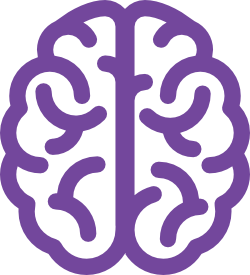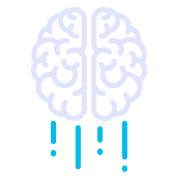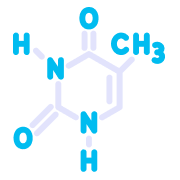Children are at Greater Risk for Concussions Than Adults
Traumatic brain injury is more common in childhood and adolescence than at any other time of life. The reasons for this are primarily due to the lack of physical development.

Life Happens
Be careful out there. While sports related activities account for roughly 25% of all concussions, accidental falls that happen in everyday life account for almost 50%!

Concussion Questions
Some of the more common concussion concerns are addressed below.
A concussion is a type of traumatic brain injury (TBI) caused by a bump, blow, or jolt to the head (or by a hit to the body) that causes the head and brain to move rapidly back and forth. This rapid movement causes brain tissue to change shape, which can stretch and damage brain cells. This damage also causes chemical and metabolic changes within the brain cells, making it more difficult for cells to function and communicate. Since the brain is the body’s control center, the effects of a concussion can be far-reaching.
The primary reason is that most people do not realize that a potential concussion event has occurred, and therefore the injured person is not properly evaluated. Concussions do not only come about with an obvious blow to the head. Often times a simple fall or whiplash event is all it takes for a concussion to occur, especially in children.
Click here to go to the top of this page Children and Concussions
Concussions are usually not life-threatening, but because the effects of a concussion can significantly alter one's life, the injury should be treated seriously.
Concussions can only be officially diagnosed by a qualified medical professional. That said, signs of a potential concussion can often be identified by comparing current cognitive performance against previously established baselines, observing the suspected concussed individual, and by asking them a few specific questions. Safe Brain's interactive digital games and SIT cognitive assessment are great tools that can help determine if medical attention should be considered.
Note: in some cases, signs of a concussion may take a few days to appear after the initial injury.
For most concussions, treatment is achieved by simply resting and gradually returning to activity under the guidance of a medical professional. On average, most concussion injuries are cleared up in a matter of days or weeks. This is the current standard of care and has helped countless concussion patients through a full recovery.
Recovering from a concussion means your brain cells must return to their normal function by rebalancing levels of chemicals, like sodium and calcium, inside and outside of the cell. Because this process takes a lot of energy, it is important to conserve energy during recovery. When properly managed, the majority of concussion symptoms will resolve within a couple of weeks. However, the over-exertion of brain cells during recovery can cause symptoms to persist for months or even years. This extended recovery is known as Post-Concussion Syndrome (PCS) and is experienced by approximately 10% to 30% of concussion patients.
During recovery, the brain is more vulnerable to re-injury. In fact, when a person sustains a concussion, they are 3x more likely to sustain a second concussion before the first one has had time to fully heal. In rare cases, a second concussion sustained during the recovery of a known or unknown first concussion can cause the brain to undergo massive swelling. This extremely rare condition is known as Second Impact Syndrome (SIS). Approximately half of SIS patients die from their injuries, and the survivors often suffer from life-long disability.









